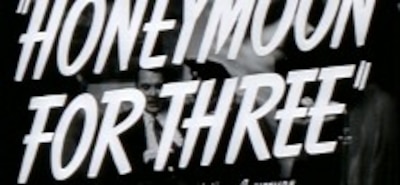Honeymoon for Three

Brief Synopsis
Cast & Crew
Lloyd Bacon
Ann Sheridan
George Brent
Charles Ruggles
Osa Massen
Jane Wyman
Film Details
Technical Specs

Synopsis
In Cleveland, Ohio, on a book tour with his efficient secretary, Anne Rogers, with whom he is in love, author Kenneth Bixby is surprised by the delivery of a bouquet. The card enclosed with the flowers is signed "Miriam" which is also the title of Bixby's latest book. Later he receives a telegram, also signed "Miriam." The mystery is deciphered when a young woman named Julie Wilson sneaks into Bixby's hotel room and passionately throws her arms around him. Although Bixby does not remember her, Julie reminds him that they were college sweethearts. Despite her marriage to Harvey Wilson, she has treasured the memory of their relationship and, assuming that Bixby has done the same, is convinced that she was the model for the character of Miriam. Charmed by her evident ardor, Bixby agrees to have breakfast with her. Their presence together is noted by Elizabeth Clochessy, Julie's cousin, who has followed her to Bixby's hotel. Elizabeth is engaged to aspiring lawyer Arthur Westlake and is concerned that Julie's infatuation might cause a damaging scandal. Determined to prevent this, Elizabeth and Arthur try to enlist Anne in their plan to exhaust Bixby so thoroughly that he will not have time for Julie's romantic schemes. Bixby has other plans, though, and dictates a letter to Anne canceling all his appointments and explaining that he intends to talk Julie out of her fantasy. Soon after Bixby departs to meet Julie, her husband Harvey knocks on the door of Bixby's room. He insists on waiting until Bixby returns, wanting only, as he says, to get a look at Bixby after years of hearing about his virtues from his wife. Anne and Harvey eventually tire of waiting and go dancing. They are joined by Elizabeth and Arthur who report that Julie and Bixby have disappeared. Although Harvey is completely unconcerned, the other three convince him to drive to the Wilson farm, where they believe the missing pair have gone. Bixby and Julie are not at the farm, however, having lost their way. After one of their tires has a flat, the pair walk to the nearest inn for dinner. By coincidence, Harvey and the others stop at the same inn. On the way inside, they encounter Bixby, who tries unsuccessfully to convince them to return to town with him. Anne refuses, and Bixby shuttles back and forth between the larger group and Julie until he slips on a rug, thus revealing his ruse. Back at the hotel, Anne and Bixby quarrel, and matters become worse when Bixby learns he has been named corespondent in the Wilson divorce. Disgusted, Anne quits her job and breaks their engagement. The next morning, Harvey, who is glad to get rid of his wife, agrees to dismiss his request for damages if Bixby will marry Julie. It appears that Bixby will be forced to accept the arrangement until Anne, spotting a woman who named her baby after Bixby, pretends that he is actually the father of the baby. Bixby goes along with the ploy, adding that "Miriam" was modeled on the baby's mother. This false confession finally ends Julie's infatuation. After Bixby pretends to jump in despair from the building, Anne admits that she loves him and they are reconciled.

Director

Lloyd Bacon
Cast
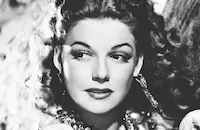
Ann Sheridan
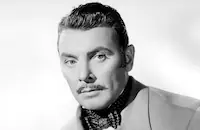
George Brent
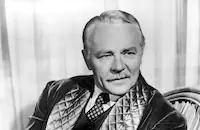
Charles Ruggles

Osa Massen
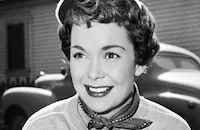
Jane Wyman

William T. Orr
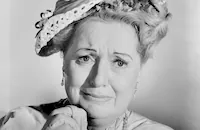
Lee Patrick

Walter Catlett

Herbert Anderson
Johnny Downs
Crew
Earl Baldwin
Henry Blanke
Hugh Cummings
Julius J. Epstein
Philip G. Epstein
Rudi Fehr
Leo F. Forbstein
Oliver S. Garretson
Ernie Haller
Ray Heindorf
Dick Mayberry
Orry-kelly
Max Parker
H. Roemheld
Jack L. Warner
Perc Westmore

Film Details
Technical Specs

Articles
Honeymoon For Three
Sheridan wasn't one of the three on the film's eponymous honeymoon, however. Cast as a popular novelist on a book tour, Brent shared the film's title with Osa Massen, a former girlfriend who decides to rekindle their relationship, and Charlie Ruggles, as the new husband she has to dump to do so. Sheridan was on-hand in a typical role as a long-suffering, wise-cracking secretary secretly in love with the boss The story had first seen light as the 1932 Broadway hit Goodbye Again, starring Tony Perkins' father, Osgood, and featuring the young James Stewart in a small role. Warner Bros. had previously filmed the play in 1933 as a vehicle for Warren William and Joan Blondell.
For Brent and Sheridan, the film led to an amorous relationship. They had first come together for a studio-arranged date in 1939, when Brent was still involved in an off-again, on-again fling with frequent co-star Davis, and Sheridan was freshly divorced from actor Edward Norris. That was about the only distinction the film held for them. Brent was hardly an accomplished comedian and would return to more comfortable ground with his next film, The Great Lie (1941), in which he served as the love object for both Davis and Mary Astor. Sheridan had just come off a string of hits -- Torrid Zone, They Drive by Night (both 1940) and City for Conquest (1941). The first had cemented her status as the "Oomph Girl," a publicity ploy that helped make her a top pinup among enlisted men. The other two had proven her strengths as a dramatic actress. In later life, she would dismiss Honeymoon for Three as the type of film she had to make in order to be assigned movies that she cared about.
As with most Warner Bros. films of the period, Honeymoon for Three was blessed with a solid supporting cast drawn from the studio's contract roles, including Lee Patrick, Charlie Ruggles and future producer (and Jack Warner son-in-law) William Orr. Most notable, however, was Jane Wyman as Sheridan's best friend. At this point in her career, Wyman was starring in low-budget films and playing supporting roles in more expensive pictures like Honeymoon for Three. She was Sheridan's best friend off-screen as well, although she couldn't help envying the star's success at the time. It would take a few more years for Wyman's star to rise, with dramatic roles in The Lost Weekend (1945), The Yearling (1946) and her Oscar®-winner, Johnny Belinda (1948).
Honeymoon for Three was expected to do little more than turn a quick profit, a fact attested to by the assignment of Lloyd Bacon as director. Although he had scored some memorable films at Warners -- most notably the pioneering musical 42nd Street (1933) and the atmospheric crime film Marked Woman (1937), starring Davis -- his chief recommendation was the speed with which he worked. He had even scored a record by filming 47 scenes in one eight-hour day for Knute Rockne All American (1940). True to form, he got through the present film in 26 days.
The growing romance between Brent and Sheridan may have helped, as they became increasingly enthusiastic about filming their love scenes, including a lengthy for the time 56-second kiss. When the film came out, critics pretty much agreed that its only box-office hope was audience interest in Sheridan's oomph and the co-stars' budding romance.
A year later, Brent and Sheridan would marry. Sadly, the relationship would not last much longer than the film did at the box office. Within a year they were divorced. The official story was that differences in temperaments and ages led to their break-up. She was 26; he was 37. She liked parties and nightclubs; he preferred quiet nights at home. In a private and then unprintable comment to a gossip columnist, however, Sheridan would later suggest a more intimate problem: "Brent bent."
Producer: Henry Blanke
Director: Lloyd Bacon
Screenplay: Earl Baldwin, Julius J. Epstein, Philip G. Epstein
Based on the play Goodbye Again by Allan Scott and George Haight
Cinematography: Ernest Haller
Art Direction: Max Parker
Music: Heinz Roemheld
Principal Cast: Ann Sheridan (Anne Rogers), George Brent (Kenneth Bixby), Charlie Ruggles (Harvey Wilson), Osa Massen (Julie Wilson), Jane Wyman (Elizabeth Cochessy), William T. Orr (Arthur Westlake), Lee Patrick (Mrs. Pettijohn), Walter Catlett (Waiter).
BW-75m. Closed captioning.
by Frank Miller

Honeymoon For Three
Quotes
Trivia
The original play, Goodbye again, opened in New York on 28 December 1932.
Notes
A 14 May 1940 Hollywood Reporter news item noted that Fred MacMurray and Olivia deHavilland were to star in the film at one time. Allan Scott and George Haight's play was previously adapted for the film Goodbye Again by Warner Bros. in 1933. That film was directed by Michael Curtiz and starred Warren William and Joan Blondell (see AFI Catalog of Feature Films, 1931-40; F3.1682).



